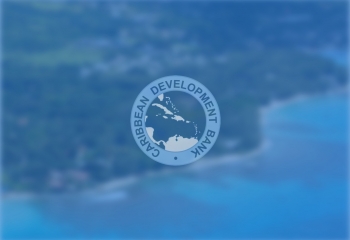CDB Sees Slower Economic Growth for Region after Last Year' Mixed Fortunes
Governments urged to speed up legal, regulatory reform
Overall growth (1%) remained sluggish as Caribbean economies experienced mixed fortunes last year amid a number of global challenges which resulted in continuing low commodity prices, falling oil revenues and an overall downturn in export trade. On the other hand, oil consumers, including the service dependent economies benefitted from the falling oil prices. Most saw an upturn in Tourism and Tourism-related business, such as Construction. At the same time unemployment rates remained high in some countries while others recorded job growth.
In its annual review of the performance of regional Borrowing Member Countries (BMCs), the Caribbean Development Bank (CDB) says the global economic difficulties of 2015 including the slowdown in China and its effect on markets elsewhere, had an overall negative impact on the region.
The vulnerability caused by a heavy reliance on overseas markets, as well as the impact of natural disasters such as storms and drought particularly in Dominica and The Bahamas, stymied growth. In some BMCs, the reduction in Correspondent Banking Relationships (CBRs) threatened the financial systems and real economies.
The Bank notes that while BMCs have started to recover from the Great Recession and collectively have recorded positive growth consistently since 2011, this growth has lagged behind the rest of the world. BMCs have grown on average 1.2% per year since 2009, compared with 3.7% globally, 1.8% in advanced economies, and 3.3% in other Small Island Developing States.
Recovery in the regional Tourism market continued last year with most destinations seeing increases in visitor arrivals; and many reported higher numbers of the more lucrative stay-over visitors. Along with these positive trends, there was an uptick in Tourism-related Construction. As a result, Grenada, St. Kitts and Nevis, and the Turks and Caicos Islands (TCI) each experienced growth of more than 4%. For some of the larger countries, such as The Bahamas and Barbados, the positive Tourism impact on growth was more modest.
At the same time, the region' five major commodity exporters - Belize, Guyana, Haiti, Suriname and Trinidad and Tobago - had lower growth than in 2014 as commodity prices fell. Significantly, Trinidad and Tobago grew by just 0.2%. The main reason was a decline in petroleum output, as falling oil prices led to a cut back in some exploratory activities; some oil and gas fields matured; and there were prolonged periods of maintenance activity. LNG output also fell.
CDB notes that joblessness within the region remains high. Many BMCs for which 2015 labour force data were available continued to experience double-digit rates of unemployment. On the other hand, unemployment fell in Jamaica, Belize and also in Barbados, despite that country experiencing public sector layoffs and constrained employment creation in the private sector.
In The Bahamas, the 2015 average rate was also lower than in 2014, although this average masks the 2,000 layoffs from Baha Mar, which were picked up in the November survey, when unemployment was measured at 14.8%. Once Baha Mar is fully open, this trend should be reversed. Unemployment fell slightly higher in St. Lucia on the back of economic growth.
In the area of trade performance, the region' biggest oil and gas exporter, Trinidad and Tobago saw its surplus in 2014 become a deficit in 2015. Suriname' deficit deteriorated on the back of weaker oil and gold prices. These movements also lowered the value of Guyana' exports; but the trade deficit narrowed due to a reduced import bill.
The non-oil producing BMCs saw reductions in their import bills. Jamaica experienced an improvement in its trade deficit. Here and elsewhere (Barbados, St. Lucia, and TCI), increased receipts from Tourism helped to improve the external current account balances. In addition, inflows of remittances grew by 2% across the region.
With high debt servicing remaining a big challenge for a number of countries, some continued to see improved performances. Under IFI-supported fiscal adjustment programmes, the debt burden fell again in Grenada and Jamaica. The debt ratio in St. Kitts and Nevis also continued to improve. Grenada is estimated to have recorded its first primary surplus (2.1% of GDP) in over ten years. Lower interest payments following recent debt restructurings also contributed to better fiscal outturns in Jamaica and St. Kitts and Nevis.
In its overall assessment, CDB notes a number of global uncertainties that will continue to impact the Region. CDB is projecting that the region will grow by just 0.3% in 2016, but notes that this growth rate is insufficient to address employment, equality and poverty reduction issues. Higher rates of economic growth are needed, as well as other measures.
CDB suggests that its BMCs need to be Dynamic, Export-oriented, Competitive, Inclusive, Diverse and Environmentally-resilient economies (D.E.C.I.D.E), in order to achieve rates of growth on a par with other fast growing developing countries. This will require that BMCs focus on private sector led growth; developing educated and flexible workforces, regional integration to maximise gains; governments becoming business facilitators and efficient regulators; and the region achieving a high level of energy security.
CDB' 2015/2016 research programme - looking at poverty; helping MSMEs; and improving port operations - will identify a number of policy actions that could advance the region' sustainable growth agenda. In addition, CDB will continue to work with its BMCs to address the other measures identified, helping them towards D.E.C.I.D.E.
